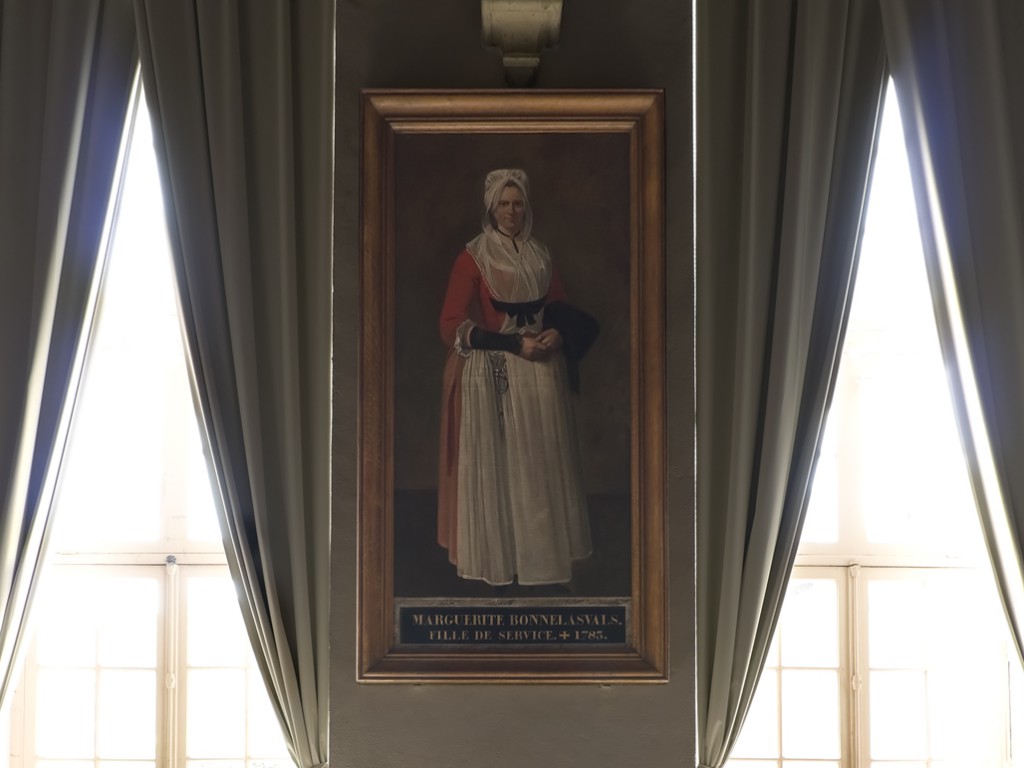
Victor Burgin, "Marguerite Bonnelasvals" (Video Still de "Hôtel D") — UIUI 01. Copyright Victor Burgin.
Certaines images postées dans cette rubrique, seront sélectionnées pour leur potentiel particulier d’anticipation d’évènements actuels. L’ image extraite de la vidéo Hôtel D de Victor Burgin, Marguerite Bonnelasvals, en fait partie.
Ci-après un extrait d’un échange d’idées récent (en anglais) entre Victor Burgin et moi-même:
Some images that will be posted in this section are selected because of their peculiar anticipatory potential of events that occur in the actuality of today. Marguerite Bonnelasvals is such a picture. This is from a recent exchange of ideas between Victor Burgin and myself:
HVG: Hôtel D offers itself as a key case study in order to understand your interest in « perceptual reality », as you name it in your « note » accompanying the piece. The research component of this interest brings in the « historical identity » of the place as a space of labour for the « filles de service » – the female hospital orderlies. […] Among the five large portraits of illustrious historical benefactors of this establishment [the Hôtel-Dieu in Toulouse – HVG] you found an equally monumental picture of a woman identified only as « fille de service« . The image of this woman, named at the bottom of the portrait itself as Marguerite Bonnelasvals (†1785), is exhibited together with the other portraits, which are all of people of a higher social rank. Facing Marguerite Bonnelasvals, as you point out, hangs a tableau of Princess Marie-Thérèse de Bourbon, daughter of Louis XVI and Marie-Antoinette. This striking finding, a result of your scrupulous perception and observation of the place, is a key theme in Hôtel D. Can you perhaps clarify how, from a strictly methodological point of view, you decided to focus your work on this quite incredible coincidence?
VB: In the perceptual and associative complex that is my experience of a place there is often a privileged point around which everything else turns. It might be a detail, an anecdote or something else. The juxtaposition of the two portraits in the Hôtel-Dieu became this point of anchorage for everything that made up my awareness of the place. One of the things that interest me is the way « the political » may be manifest as a mutable aspect of our everyday reality, on the same perceptual basis as the changing light, an aching knee or a regret. The coincidence of the portraits is a trace of the political in the overlooked, and therefore part of what I look for in the everyday.
Il n’y a pas encore d’image officielle de la fille de chambre qui – en quelques heures – est devenue une des femmes les plus invisibles du monde. Elle s’appellerait, assez énigmatiquement, Ophélia.
We do not have an official photograph yet of the chamber maid that now suddenly has become one of the most invisible women in the world. She is said to go by the enigmatic name of Ophelia.
Pour le compte rendu complet de l’échange d’idées entre Victor Burgin et Hilde Van Gelder, voir / For the full exchange of ideas between Victor Burgin and Hilde Van Gelder, see:
Eurozine : « Art and politics: A reappraisal », Victor Burgin et Hilde Van Gelder
L’exposition Hôtel D est une production du Jeu de Paume. Voir / Hôtel D was commissioned by the Jeu de Paume. See:
Jeu de Paume, Victor Burgin « Hôtel D », dans le cadre du Printemps de Septembre à Toulouse
Portrait filmé de Victor Burgin :
Bibliographie:
V. Burgin et H. Van Gelder, ‘Artistic Representation and Politics: An Exchange between Victor Burgin and Hilde Van Gelder’, A Prior, 20 (Printemps 2010): 92-121.
V. Burgin et H. Van Gelder, ‘Artistic Representation and Politics: An Exchange between Victor Burgin and Hilde Van Gelder’, dans V. Burgin (réd.) Victor Burgin. Parallel Texts. Interviews and Interventions about Art (Londres: Reaktion Books, 2011), 207-225.